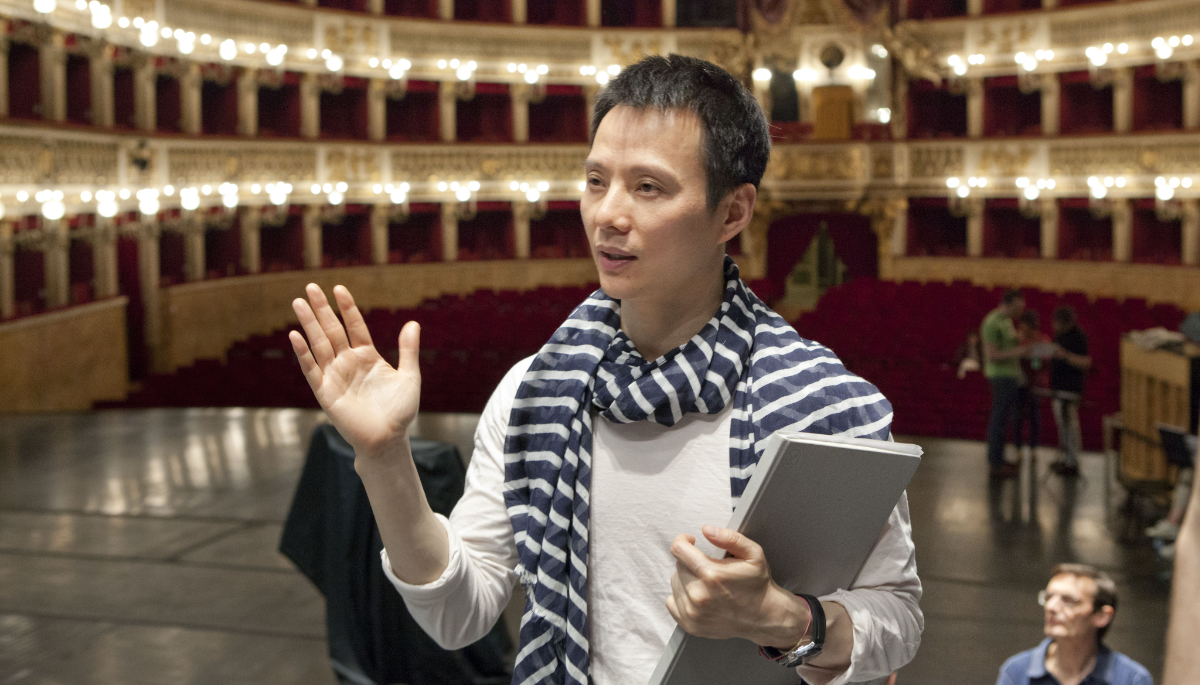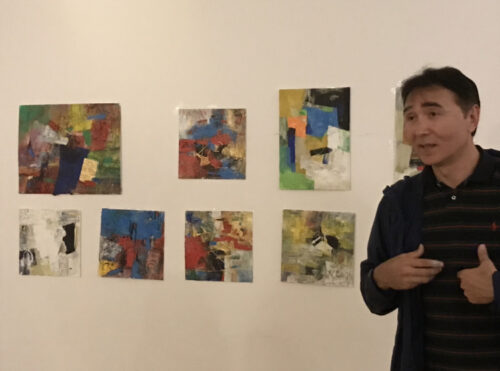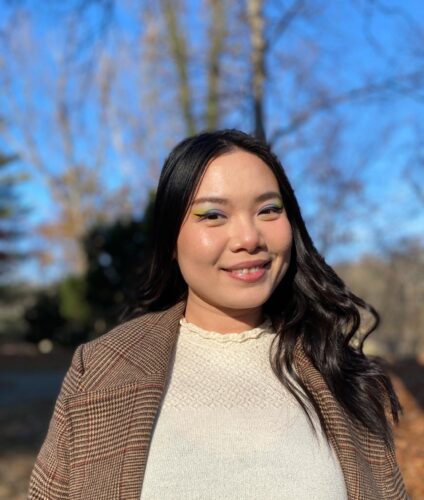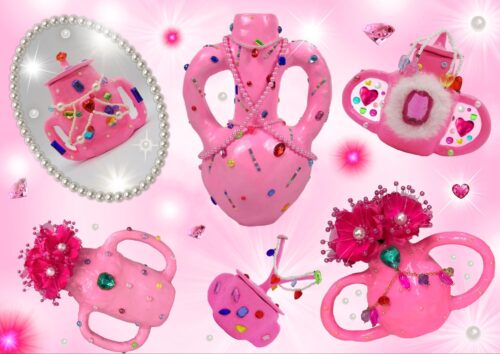Q&A with Shen Wei, visual and performing artist from two cultural worlds whose work appeared in the 2008 Beijing Olympics
From a family with deep roots in creative fields, Shen Wei went on to study Chinese and Western art forms across multiple disciplines and create award-winning works presented at renowned events around the world. He has seen increased excitement about contemporary art in his home country of China, and this year he'll have his first large show of paintings in Asia.

The choreographer and artist Shen Wei is perhaps best known to audiences around the world for his work that was featured in the opening ceremony of the 2008 Beijing Summer Olympics. Shen’s contribution, entitled “Scroll,” merged the traditions of classical Chinese visual arts with contemporary dance.
Shen was born in central China’s Hunan Province in 1968 to a family deeply involved in the arts — his mother was a theater producer and his father a Chinese opera director. His early years were spent immersed in various traditional art forms before he began professional training in Chinese opera, and he has maintained a lifelong interest in the visual arts that frequently manifests itself in his dance work as well as in his painting.
He founded Shen Wei Dance Arts in New York City in 2000 and has received numerous accolades since, among them a Guggenheim Fellowship, a Nijinsky Award and a MacArthur Fellowship (the “genius grant”). He became a member of the World Economic Forum’s Young Global Leaders organization in 2009. Shen’s choreography has been characterized as blending elements from traditional Chinese arts, natural movement, abstraction and surrealism, and his expertise extends into the realms of performance art, set design and visual art.
Over the last 15 years, Shen Wei Dance Arts has performed in 138 cities in 30 countries, and has been part of the Lincoln Center Festival, Sydney Festival, Spoleto Dance Festival and the Venice Biennale, and the company recently completed a five-year residency at the Kennedy Center in Washington, D.C. Shen’s major representative works include the dance pieces “Folding” (2000), “Rite of Spring” (2003) and “Connect Transfer” (2004); the Beijing opera “Second Visit to the Empress” (2005); site-specific performances at the Metropolitan Museum of Art and the Guggenheim Museum; and the large-scale paintings that debuted in a solo exhibition organized by the Miami Dade College Museum of Art + Design, “Shen Wei – In Black, White and Gray” (2014).
In a conversation with The China Project, Shen discusses his cross-disciplinary background spanning two very different cultures, describes his experience working in China and shares his excitement for his latest creations and the year ahead.
The China Project: How did you get your start in the arts through traditional Chinese opera?
Shen: I grew up in an artistic family, and my family involved me in traditional arts. I started learning how to do painting, calligraphy and many things related to Chinese culture. At 9 years old, I started professional training as a Chinese opera performer, but before that, when I was 6 years old, I was already performing on the opera stage. Then I spent six and a half years professionally studying Chinese opera.
The China Project: And how did you go on to become a modern dance choreographer?
Shen: When I graduated I was selected to work for the biggest opera company in Hunan Province, and I continued being a performer for almost five years after graduating. But when I was little I already started to study Chinese classical painting, and after I graduated I also became really interested in the new information coming into China about the Western art forms, especially when I saw books of drawings by Da Vinci and Michelangelo. That made me really passionate about the Western visual arts. So during that opera period, I spent lots and lots of time studying Western painting, and a friend of mine became like a personal teacher to me for many years. I studied all the paintings all the way from the Renaissance to the modern and postmodern American art forms. Not until 1988 or ’89 did I start to open up to another form. I always liked to be a performer, and I had learned dance like lots of performers in Chinese opera. So around ’88 to ’89, I got really into modern dance and moved to study modern dance in Guangzhou. So that was another shift, with Western culture, from visual arts to modern dance, but all of these things are things I’m still doing. Visual art, dance – they’re all passions for me.

The China Project: During this period, did you feel at all divided in your interests or your passions?
Shen: During those times in the 1980s in China, when I studied Western painting it brought me a deepened perspective about visual arts, because when I was little I only knew the Chinese side, so ultimately it deepened my sensibilities. Having studied Chinese opera, Chinese painting, calligraphy, watercolor, I had a kind of foundation. Once I started studying Western culture through painting and modern dance, they offered me a different way of seeing things and actually balanced me in some way, made me even more curious. That study and opening up to Western culture really helped me to relate to my way of seeing today.
The China Project: Why and how did you make the move to the United States in 1995?
Shen: The biggest reason why I came to the U.S. is that I really wanted to study more. Before coming to the U.S., from 1991 to 1994, I was already a choreographer and a dancer in the first modern dance company in China, in Guangzhou, and I was kind of really doing pretty well. I was successful in China, but I felt that it was not enough. Somehow it was not satisfying for me.
I applied for scholarships everywhere, but New York is amazing. Coming to New York was my big dream – to really learn so much from the city and to continue my education so that I could continue being a creative person. At that time, it was like a dream that you can go to a place like New York, learn so many things in one of the best places for art. That got me to make a huge move, to give up my job and my house and big salary, and come to New York as a really poor student, but I have really amazing memories of those times as well.
The China Project: Since then, your work has been seen around the world, and you’re still based in New York. How would you describe your relationship to China at this point in your life?
Shen: When I left China, I started to see more of who I am. Living in China, you don’t really understand your own culture as much, the big picture at least, and you may not be as interested in your own culture as much as when you leave.
I have a really strong foundation in traditional Chinese culture, and I look back at the things that really deeply connect with me in Chinese culture and what is most interesting to me about modern contemporary culture and Western traditions. And when you’re open to the different sensibilities, you realize it’s not one or another, it’s actually both.
When I moved to New York I went back to study Chinese culture again, and for the first five years in New York City, I studied and really tried to understand the culture – why the principles and the philosophy, the lifestyle or values, had developed in a certain way. And I went back to read all the books about Laozi and Zhuangzi and Confucius, to study the beauty of the Chinese poems of the Tang and the Song, the traditional master visual artists, as well as the traditional music and, of course, Chinese opera. And I felt my understanding developed more than when I was in China, because maybe I could see the differences and compare them with other cultures.

The China Project: What do you think people need to understand about your work and its relationship to China?
Shen: The piece called “Folding” was developed four or five years after I left China, when I was living in New York City and rediscovering everything I mentioned before. In 1999 I went back to Guangzhou, and the director of the company at the time asked me to make a piece for the company to tour in Europe. So I started really thinking about the lessons of Chinese culture, understanding the spirit or principles and developing them for a place in contemporary life, using an abstract form to connect to people, and this was the source of “Folding.” This piece came from my understanding of Chinese culture and how to connect it to Western culture and communicate that to the audience.
I brought this piece to Beijing in 2014, almost 15 years later, and the Chinese audiences in Beijing and Shanghai were really touched by this work, and they really understood how it related to them, but not literally or by using all these Chinese symbols. I was kind of worried about [the audience reception] in the beginning, but that was not an issue so I’m very happy. Once you understand the sensibilities of a culture or people, then you can really communicate with them – not just repeating what they already know or could know, but developing a space for their continued growth.
The China Project: How is development of dance as an art form in China progressing and what do you see as the challenges and opportunities there?
Shen: I went back to China for the first time with my company in 2012, so it took 12 years after I started the company. I have to say, in these past few years China has seen a huge change. I wish the change could have been even earlier, but in these few years I do see the energy and excitement of young people, and even among organizations, and people who are really starting to pay attention to quality of life, and they see the value of culture and of art forms.
I see all these new modern dance companies coming up, and so many smaller ones, too, and they’re getting support from the government and different foundations, just within the last two or three years. And festivals are growing like crazy. They’re starting really late, but you’ll see the improvements over the coming years, and they’re really putting energy into the international scene and inviting amazing, amazing artists from around the world to perform in China.
Once people start to enjoy these things, they think, “we should go see another show,” or, “let’s talk about this performance,” and it opens people up to creativity, and they’ll bring themselves to questioning what they should make of who they are and what they can do.
The China Project: Do you think there are still challenges in connecting China and the U.S. in arts and dance, and can these be met or overcome?
Shen: Modern culture and modern dance have developed in China much later than the U.S. China is just now starting, which means in some ways it’s catching up and it takes time, while also the taste and culture of China and the U.S. are very different.
In the U.S., talking about dance as a serious art form is very clear, but in China, they don’t really have a really clear divide, or a clear way to see the difference with entertainment or other types of culture. I’m not saying it’s not okay to use things like entertainment or commercial elements, but modern dance is about searching and trying to develop new sensibilities, so the principles of creativity are a little different. Some young artists in China don’t have a clear sense of the dualities, but there are also some really serious young artists who understand the difference.
The China Project: What are your personal and professional goals over the next five years?
Shen: After so many years of being a creative person, none of the years have been easy years. Every year feels like a challenge – you’re really trying to improve yourself and you may figure out a question you had last year, but then you have a new one.
For this coming year, I’ll have a painting exhibition at Asia Society Hong Kong in March. It’s a solo show, and I’m also bringing my dance company to be part of the exhibition for three days. That will be my first big show of paintings in Asia, and in November, I have a big tour in Beijing and Shanghai and maybe also a few other cities. I’m really looking forward to going back to China in 2016, because it’s so exciting to share my new work with the audiences in China. And in New York I have the 15th anniversary of my dance company, so there will be a program at the Guggenheim museum on February 28 and 29, and in October there will be another big new piece I’m working on right now.
Next year I have to continue this work in visual arts and performing arts, so that will always be my passion for the future, but you never know. Every year we step into a new challenge and a new passion.
The China Project: Do you see China playing a larger role in your career in the future?
Shen: Yes, though it’s hard to say for the future. I always tell people we never know what’s coming next year. When I came to New York to study, I never thought I would stay here. I did not have a plan. I never thought I would have a company in New York City – during those times, I didn’t know my abilities or how much I could really do. I didn’t know if I could be really successful or be a choreographer in New York City with all the challenges. I never thought I would survive for 15 years, because I was surviving year by year.
Some years I travel to Europe, and during the Olympics I stayed in China for a year and a half to work on the opening ceremonies. If I’m really needed or if I’m really going to affect people or the world in a way I think is good for the world, then I will participate to do whatever I can to communicate or give the value of culture and art to the people. I will do whatever is the next step. Like this year, we never thought we could tour for, like, a month in China. Before we would think it would just be one show or one city.
The China Project: How did your involvement in the 2008 Beijing Olympics come about?
Shen: I had presented my work at the Lincoln Center Festival and performed at Lincoln Center many times, and there was a production by [the composer] Tan Dun, who I’d known for many years. He was making an opera collaborating with [the film director] Zhang Yimou, and they needed a choreographer for the production, but unfortunately, I couldn’t do it because I was working on another opera of my own. I believe that was around 2005 or 2006.
Around that time, Cai Guo-Qiang, the visual artist in NYC, who had seen my productions many, many times, also approached me and said he would like to get a group of artists to submit a proposal for the Beijing Olympics. I said, “Yes, I will do it.” Then Cai Guo-Qiang went to Beijing and brought my name up to the committee in Beijing. They saw my work and invited me back, so I went to Beijing in the beginning of 2007.
I think it was impressive that they would allow my work, with its contemporary ideas and concepts, to be part of the opening ceremonies. To go that far in 2008 and to understand how I see Chinese culture and how I’m taking Chinese tradition in a really contemporary new direction was expressed in my section of the scroll paintings in the beginning. That’s something I never planned either, because I thought they would think of me as a little too contemporary or a little too abstract. I was really kind of nicely, nicely surprised.

The China Project: In light of your lifelong studies of Chinese culture, is there a distinctly Chinese idea that will benefit the world in the future?
Shen: Apart from the philosophical ideas or concepts that we can always find online or in books, the most important thing is the different sensibilities we can develop.
For example, when you hear Chinese opera, a lot of [Western] people don’t understand why anyone would really be into this kind of music – maybe the pitch is too high or the sounds are too loud. But when the sensibility is developed, you will see another kind of beauty that you don’t get from your own cultural background.
In Chinese culture we also have a poem, which says that we should keep the dead leaves because you can listen to the raindrops falling on them. That’s a beautiful way to see the imperfect beauty of nature.
My recent paintings maybe speak to all the things I want to say about how my sensibilities or understanding of Western and Eastern cultures have developed. If you see them in small pictures online, you may think, “Oh, look at the Chinese landscape,” but actually it’s really nothing of that kind. It may have the essence, but when you see everything up close and the detailed structures, there’s something of a Western contemporary way of expression, as well.
The China Project: What are you most proud of in your career so far?
Shen: It’s hard to say. I would tell people, “If I go to the 70th floor, I have to take each step to get to the 70th floor, but I think every step has value for me, and each step is the most important step at that time.” You’re always most proud of the moment’s work you are doing. If you see my recent works, I’m pretty proud of these new things, the paintings. I’m really happy about creating something that I’ve never done or something more than what I did in the past.
The China Project: Which Chinese artist do you think people should know more about?
Shen: The painter Li Zhang is one, and Bada Shanren is another really good one.





